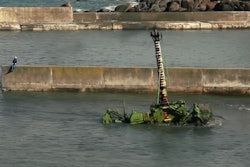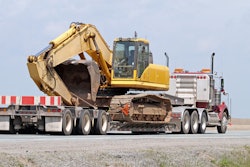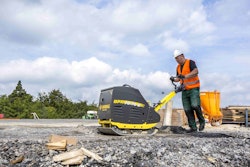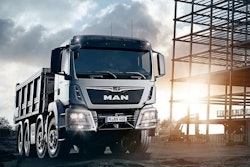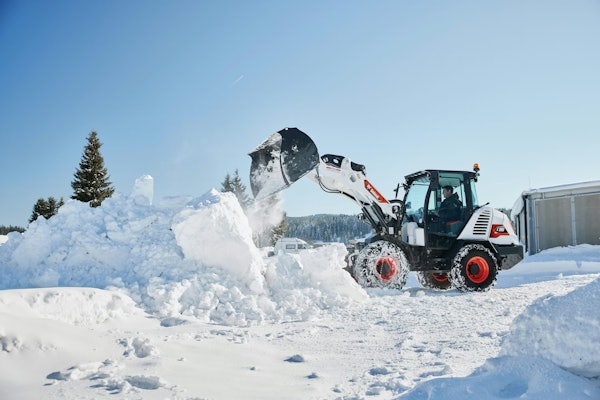BOMAG reduces vibrations on operator’s hands with new BPR 70/70 D compactor
BOMAG’S new BPR 70/70 D reversible plate compactors come standard with the company’s new “comfort handle,” which reduces vibration on the operator’s hands.
The handle is also available on other BOMAG medium and large reversible plate models, starting with the BPR 45/55 D.
The BPR 70/70 D features a longer steering rod, which requires less effort from the operator to maneuver the compactor. The steering rod can be adjusted to the operator’s height, and it can be locked in the vertical position for transport. The company says it placed the vibration and throttle controls on the steering rod to deliver quick reversal times for increased productivity.
To read more, click here.
Cat’s new CW16 pneumatic roller features oscillation, auto speed
The CW16 pneumatic roller from Caterpillar is designed for mid-size highway, street and road work and for use on granular and all types of asphalt-mix designs, the company says.
The rubber-tire roller comes in nine-wheel and 11-wheel models, achieving 69-inch or 84-inch compaction width, respectively.
The operating weight can be adjusted to the task. The nine-wheel model’s per-wheel weight can be adjusted from 1,280 to 3,680 pounds, and from 1,060 to 2,975 pounds for the 11-wheel model. The machines’ total operating weights range from 11,464 to 33,000 pounds, depending on the ballast used. Ballast can be water, sand, steel or a combination. The ballast chamber is water-tight and has baffled compartments to prevent surge.
To read more, click here.
Buried Alive in Blue Earth County: How one contractor’s missteps took one life, shattered others and ruined his business
From 28 feet above him, Casey Rady heard his boss shout.
“Get in the trench box!”
Fifteen feet above him, a long horizontal crack formed in the excavation wall.
“I glanced up to see what was going on,” Rady recalls, “and I could see pieces of it cracking, and it was like a whole shelf started to come loose.”
Panic set in. “Which way do we go?” he recalls thinking.
Standing in 6 to 8 inches of water, he spotted an extra section of 4-foot-diameter plastic pipe floating in the trench box.
He grabbed the sleeve of his childhood friend and co-worker Dave Erickson and dragged him toward the pipe, hoping to find protection from the ensuing collapse. As he ducked to enter the pipe, he lost his grip on Erickson’s sleeve.
Rady looked back. Erickson stood in the trench box as if frozen, staring up at the collapsing wall.
To read more, click here.
First Look: A quick drive in Volvo’s electric FL, a battery-powered cabover that could serve light construction, utility work
Several weeks after Volvo Trucks debuted its first two electric trucks for the European trade press in Sweden, it was the North American journalists’ turn to experience the company’s new fully electric FL and FE models.
And it’s appropriate that European media had the first turn, since these trucks undoubtedly will find a home in regional and urban environments throughout Scandinavia and Europe before the North American market identifies suitable applications for Volvo’s battery technology in Volvo Trucks’ truck lineup in North America.
The Volvo FL and FE conventional cabovers are the smallest models in the truck maker’s global product mix. The units are used primarily for city distribution, waste hauling, light construction and utility work — all perfect applications for electrification.
To read more, click here.
Special Report: Death by trench
The business and human costs of trench-collapse fatalities in the United States
When it comes to construction fatalities, trench deaths can be easy to overlook. The number of deaths – 49 in the 2016 to 2017 time period – falls far below the top four culprits of construction deaths: falls, electrocution, struck by object and caught-in/between.
But trench fatalities usually mean prolonged efforts to recover a victim, exacerbating the experience for co-workers and family. They require advanced expertise by first responders. Many times, even partially buried victims don’t survive. And they deal a staggering loss to families and to crews that sometimes have worked together for years.
Then there’s the cost. OSHA fines are just the beginning. A trench death stops work, increases workers’ compensation costs, hikes your insurance premiums and makes you ineligible to work for certain owners. And all of that is before the legal fees.
Most frustrating of all: every death could have been prevented by using methods that have been known for decades.
In preparing this report, the editors of Equipment World wanted to examine the human side of the trench fatality statistics. We talked to survivors, co-workers, victims’ families and first responders. We heard from victims’ advocates and lawyers. We asked trench protection experts and contractors for best practices.
These deaths delivered immeasurable loss. They all began with the decision that a trench didn’t require worker protection.
To read the full report, click here.




